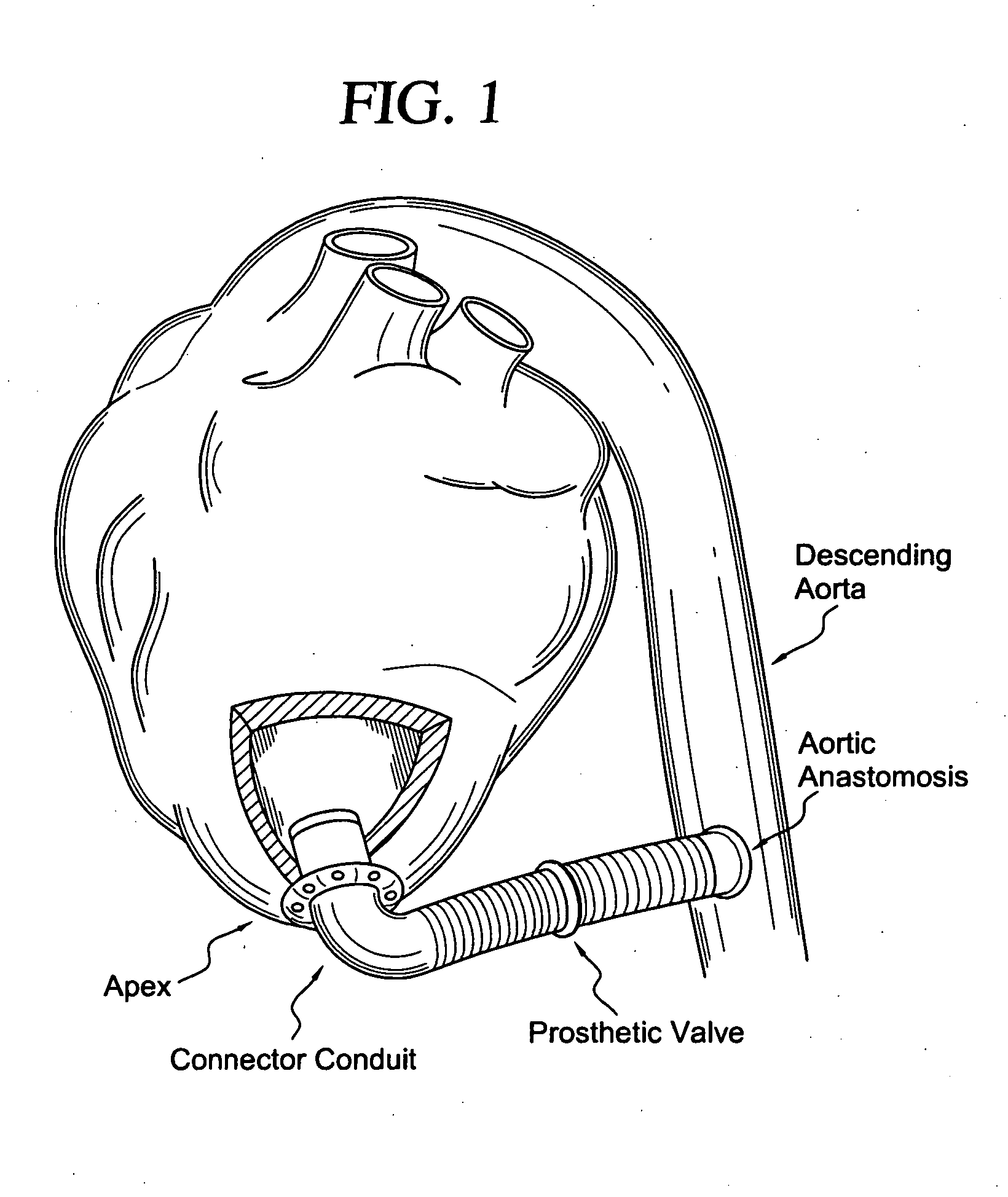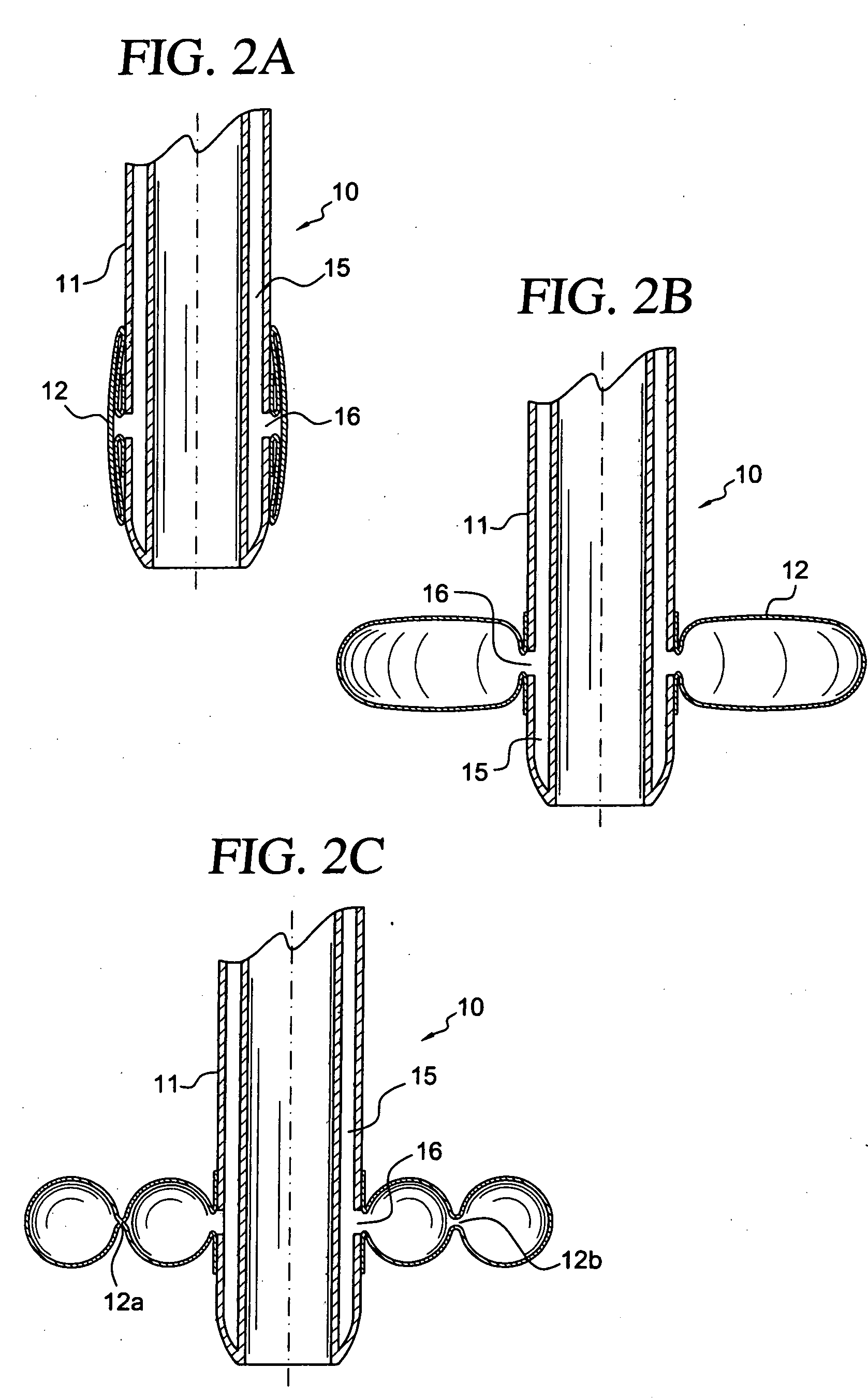Apparatus and method for connecting a conduit to a hollow vessel
a technology of apparatus and hollow vessel, which is applied in the field of apparatus and method for connecting a conduit to a hollow vessel, can solve the problems of a lack of efficient devices for performing the procedure, and achieve the effect of reducing blood loss
- Summary
- Abstract
- Description
- Claims
- Application Information
AI Technical Summary
Benefits of technology
Problems solved by technology
Method used
Image
Examples
first embodiment
[0050] the present invention is shown in FIGS. 3A to 3I. FIG. 3A illustrates the distal end of the applicator with retractor 10, cutter tube 20, and reaction tube 30. The applicator is shown outside the aorta 70 with balloon 12 deflated. The trocar tool 13 is inserted into the retractor housing 11. (Details of retractor housing 11 and flow passage 15 are shown in FIG. 2D.) Once the desired location where the side branch portion 52 of the aortic connector 50 will pass through the aorta is chosen, the retractor 10 with trocar tube 13 is inserted through the aorta wall and progressed until reaction tube 30 is pressed against the outer wall of the aorta, as shown in FIG. 3B. Then, balloon 12 is inflated. Then, retractor 10 is moved axially with respect to the reaction tube 30 and cutter tube 20 until the aorta 70 is firmly sandwiched between the balloon 12 and reaction tube 30. A spring may be used to move the retractor 10 relative to the reaction tube 30 and to provide the compressive ...
second embodiment
[0060] the present invention is shown in FIGS. 4A to 4H. This embodiment replaces the balloon 12 with a solid clamp pad 17, which is rigidly attached to the distal end of retractor housing 11′. In the alternative, clamp pad 17 itself may be an expansion element, such as a balloon, which a smaller diameter than the cutting element, thereby only allowing it to function as a clamping element. Clamp pad 17 may also include spikes or hooks that penetrate the aortic wall to help prevent movement of the aortic wall relative to the clamp pad 17 after the aortic wall is firmly sandwiched between the clamp pad 17 and reaction tube 30′. Also, the reaction tube 30′ in this embodiment is located concentrically between the cutter tube 20′ and retractor 10′. A description of how the applicator is used to implant the aortic connector 50 will be used to further describe the components of this embodiment.
[0061]FIG. 4A illustrates the applicator with trocar tool 13′ penetrating aorta 70. The trocar 13...
PUM
 Login to View More
Login to View More Abstract
Description
Claims
Application Information
 Login to View More
Login to View More - R&D
- Intellectual Property
- Life Sciences
- Materials
- Tech Scout
- Unparalleled Data Quality
- Higher Quality Content
- 60% Fewer Hallucinations
Browse by: Latest US Patents, China's latest patents, Technical Efficacy Thesaurus, Application Domain, Technology Topic, Popular Technical Reports.
© 2025 PatSnap. All rights reserved.Legal|Privacy policy|Modern Slavery Act Transparency Statement|Sitemap|About US| Contact US: help@patsnap.com



